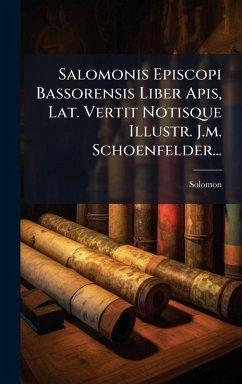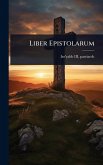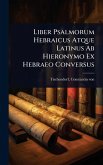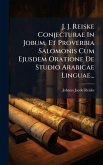Salomonis Episcopi Bassorensis Liber Apis, Lat. Vertit Notisque Illustr. J.m. Schoenfelder... presents a Latin translation of Solomon of Basra's "Book of the Bee," a significant work of Syriac Christian literature. This volume offers valuable insights into the biblical interpretations and theological perspectives prevalent in the Syriac-speaking world during Solomon's time. The "Book of the Bee" provides a unique synthesis of Old Testament narratives, theological reflections, and historical accounts. J.M. Schoenfelder's translation makes this important text accessible to a wider audience, accompanied by illuminating notes that contextualize the work within its historical and theological milieu. This edition serves as an invaluable resource for scholars and students interested in Syriac Christianity, biblical exegesis, and the intellectual history of the Middle East. This work has been selected by scholars as being culturally important, and is part of the knowledge base of civilization as we know it. This work was reproduced from the original artifact, and remains as true to the original work as possible. Therefore, you will see the original copyright references, library stamps (as most of these works have been housed in our most important libraries around the world), and other notations in the work. This work is in the public domain in the United States of America, and possibly other nations. Within the United States, you may freely copy and distribute this work, as no entity (individual or corporate) has a copyright on the body of the work. As a reproduction of a historical artifact, this work may contain missing or blurred pages, poor pictures, errant marks, etc. Scholars believe, and we concur, that this work is important enough to be preserved, reproduced, and made generally available to the public. We appreciate your support of the preservation process, and thank you for being an important part of keeping this knowledge alive and relevant.
Bitte wählen Sie Ihr Anliegen aus.
Rechnungen
Retourenschein anfordern
Bestellstatus
Storno








